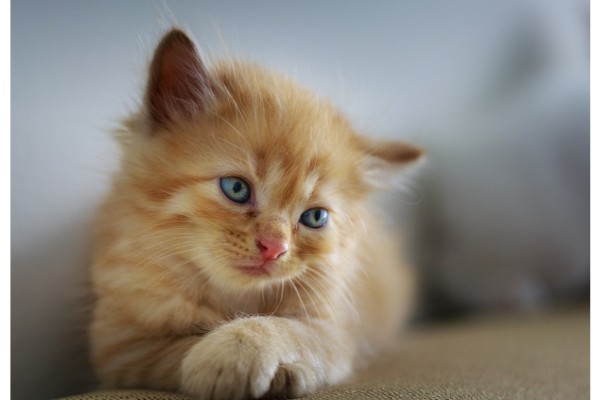Despite the fact that cats are typically excellent groomers, they always enjoy being pampered by their owners. Maintaining a cat’s grooming routine can also contribute to the health and happiness of your cat. Here are a few simple guidelines for cleaning your cat’s ears at home.
Table of Contents
Benefits Of Cleaning Your Cat Ears
Cats are known for keeping their fur very tidy, so they typically do not need to have their ears cleaned. An ear problem, such as an infection or mites, may require occasional cleaning to help prevent it. it’s difficult for them to groom the insides of their ears. As a result, occasionally cleaning your cat’s ears may be necessary to prevent problems like ear infections and ear mite infestations.
How Often To Clean Your Cat Ears
Every now and then, you should clean your cat’s ears. Little ear wax is visible in the light pink color of healthy, clean ears. Examine your pet’s ears frequently to determine whether they require cleaning.
According to Sewell, brown debris is the most prevalent color. Wax or a more serious issue could be at play here. For instance, debris from ear mites resembles coffee grounds or potting soil. Your pet needs medical attention if you notice that. Another indication to visit your veterinarian is foul odors, redness, and sores.
Cats monitor you with their extremely sensitive ears, which are among the most delicate in the mammal kingdom. Cleaning your cat’s ears, whether you do it occasionally or frequently, is another way to make sure your furry friend is comfortable.
What Are The Signs That Your Cat Needs To Have Their Ears Cleaned?

You must take your cat to the vet if it is scratching at its ears or head. They could require treatment for an infection or mites. Recall that a small amount of wax is typical. Some breeds, including Rex, Sphinx, and other hairless breeds, may produce more wax. Ask your veterinarian about the changes if the wax amount changes, as this could indicate that your cat is experiencing a problem.
What You Need To Clean Your Cat Ears
Although it might take some practice, cleaning your cat’s ears at home can actually be quite simple. If your cat is agitated or resisting your attempts to clean its ears, please do not. Here’s what you’ll need to begin:
- Ear Cleaning Solution
This is critical because using the incorrect solution in your cat’s ears could cause deafness, balance issues, or other problems. Obtain advice from your pet’s veterinarian. - Cotton Ball
Clean, blot, and dry the inside of your cat’s ears using a cotton ball. Almost all human pharmacies sell cotton ball squares. You can also use tissues, cotton balls, or cotton makeup rounds. Simply avoid cleaning your cat’s ears with cotton swabs because you risk damaging their eardrums. - A Towel
You can gently wrap your cat in the towel but remember – less is better in terms of restraint. After your cat shakes the solution out of its ears, having a towel on hand is useful for drying surfaces. - A Partner
Depending on your cat, having a second person hold your cat while you clean its ears might be more convenient. - Treats
By rewarding your cat frequently, you can help them develop a favorable association with ear cleanings.
Steps To Clean Cat Ears
- Grabbing your cat in your lap while seated comfortably. If your cat is reluctant to have her ears cleaned, you might be able to keep her calm by wrapping or swaddling her in a towel.
- In order to reveal and straighten the ear canal, grasp the pinna at the tip and pull back a little.
- Your other hand should be holding the ear cleaning solution while the other holds your cat’s ear flap firmly but gently.
- Put some ear cleaner in your cat’s ear. Fill the ear canal with a cleaning solution entirely. If some of the cleaner leaks into the canal, it’s okay. Do not put the tip of the bottle into the ear. If the bottle’s tip touches your cat’s ear, remove it with a clean cotton ball dipped in alcohol to stop the growth of bacteria or yeast.
- Hold the ear flap in place for a further 30 seconds while using the other hand to gently massage the base of the ear beneath the ear opening. Consequently, the debris in the ear canal can be broken up by the cleaning solution. As the cleaning solution moves about in the horizontal portion of the canal, you should hear a squishing sound.
- Use a cotton ball or piece of gauze to clean the inner portion of the ear flap and the upper ear canal while still holding the ear flap.
- Observe your cat’s head shaking. This makes it possible for any leftover ear-cleaning solution and ear canal debris to exit the canal and reach the outer ear opening.
- Holding the ear flap once more, use a cotton ball or piece of gauze to clean out the outer opening of the ear canal of the loosening debris and cleaning solution.
- With a cotton ball or piece of gauze, remove any debris and any cleaning solution that may still be inside the ear canal. Only go into the canal as far as your finger will reach. Never use a cotton-tipped applicator (Q-tip®) to flush the solution out of the ear canal. By doing so, debris may be pushed deeper into the canal or the ear canal and/or eardrum may be damaged.
- Offer treats and compliments to your cat.
- With the other ear, repeat the same procedure.
- Stop cleaning if your cat seems to be in pain and call your vet.
- As frequently as your veterinarian advises, repeat the cleaning procedure.
Apply the medicine after cleaning the ears if your cat has an ear infection and needs to have it treated.

What To Look For During Cleaning
You are the best person to spot anything out of the ordinary with your cat’s behavior or health because you are its owner. When cleaning your cat’s ears, keep an eye out for signs of problems including:
- Ear discharge (blood, pus, or other fluid)
- Odor around the ear
- Excess scratching, pawing, or rubbing of the ears
- Redness in the ear canal
- Sensitivity or pain around the ears
- Ear swelling
- Masses around the ear area
Preventing Problems During Ear Cleaning
Don’t force the cleaning if your cat is stressed out because you want him to be at ease during the cleaning. Here are a few tips for ear-cleaning:
- Avoid using cotton swabs or other abrasive cleaning tools because they can seriously hurt you.
- It’s best for the cat if both ears are cleaned at the same time, so try to clean both ears on the same day. However, if your cat is unhappy, don’t force the issue. You could always try again the next day.
- Hire a helper, but make sure they are someone your cat adores.
Consult your veterinarian if you think there might be a problem with your cat’s ears or if you notice anything unusual. You’ll become accustomed to what is normal and what is not if you regularly clean your cat’s ears.
Step-by-step Guide For Medication Application
Once your cat’s ears have been cleaned, you can frequently administer medication right away. Regarding the frequency of administration and the required number of drops, your veterinarian can give you more details.
- Pull back a little bit while holding the ear flap’s tip to expose and straighten the ear canal.
- As directed by your veterinarian, administer the prescribed number of drops of medication. Avoid inserting the bottle’s tip in the ear. If the bottle’s tip touches your cat’s ear, remove it with a clean cotton ball dipped in alcohol to stop the growth of bacteria or yeast.
- For about 30 seconds, keep holding the ear flap in place while giving a gentle massage to the area beneath the ear opening. As a result, the entire ear canal can be coated with the medication. As the medication covers the horizontal portion of the canal, you should once more hear a squishing sound in the ear.
- Put the recommended amount of medication on the infected part of the ear flap if the inner part of the ear flap is affected by the infection.
- Using a glove, if possible, spread the medication with your finger.
- If necessary, repeat this procedure on the other ear.
- With a cotton ball dipped in an ear-cleaning solution, debris or medication that has accumulated on the flap portion of the ear can be removed.
FAQs

Do I Really Need To Clean My Ears?
Utilizing a high-quality ear cleaner is highly advised. The ear canal may become irritated by cleaners that contain alcohol or hydrogen peroxide, particularly if the canal is inflamed or ulcerated. Some ear cleaners contain antibacterial or antifungal components to aid in preventing ear infections. Wax buildup can be more effectively removed by specific cleaners. You can get advice from your vet on the best ear-cleaning solution for your pet.
Do All Cat Ears Need To Be Cleaned?
No, even though it is crucial to clean your cat’s ears when necessary, excessive cleaning can irritate the ear canal and result in infection. Most cats have clean, healthy ears and don’t ever require ear cleaning. However, if you detect a discharge or smell when inspecting the ear, it is advised to clean your cat’s ears. You can get advice from your vet on how frequently to clean your cat’s ears. Consult your vet before cleaning your cat’s ears if they are red, inflamed, or hurting. Your cat might have an ear infection or a ruptured ear drum.
Even though it might take some time to get your cat used to having their ears cleaned, you can help them keep their ears clean at home (and save yourself some time in the process) with the right tools, persistence, and gentle handling. After cleaning the ear, please let your veterinarian know if you spot any blisters or red areas. This kind of cleaning might irritate your cat.




